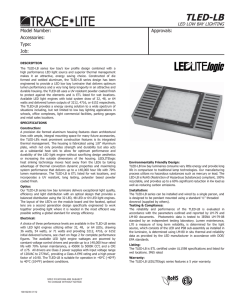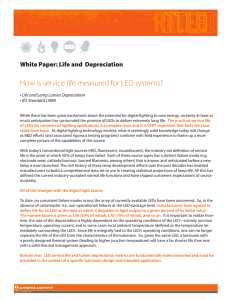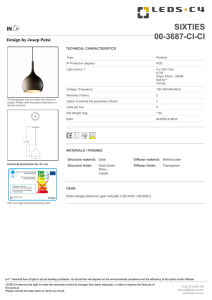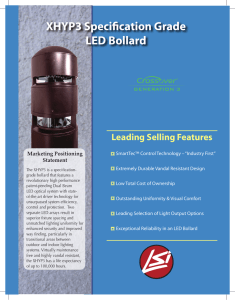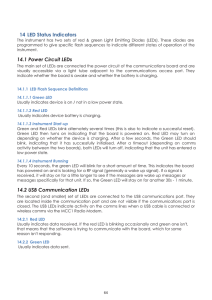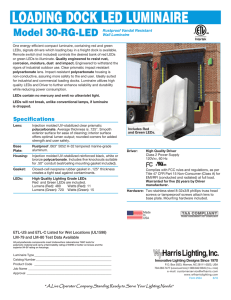Q: Can I use them with occupancy sensors and dimming? A: Yes
advertisement
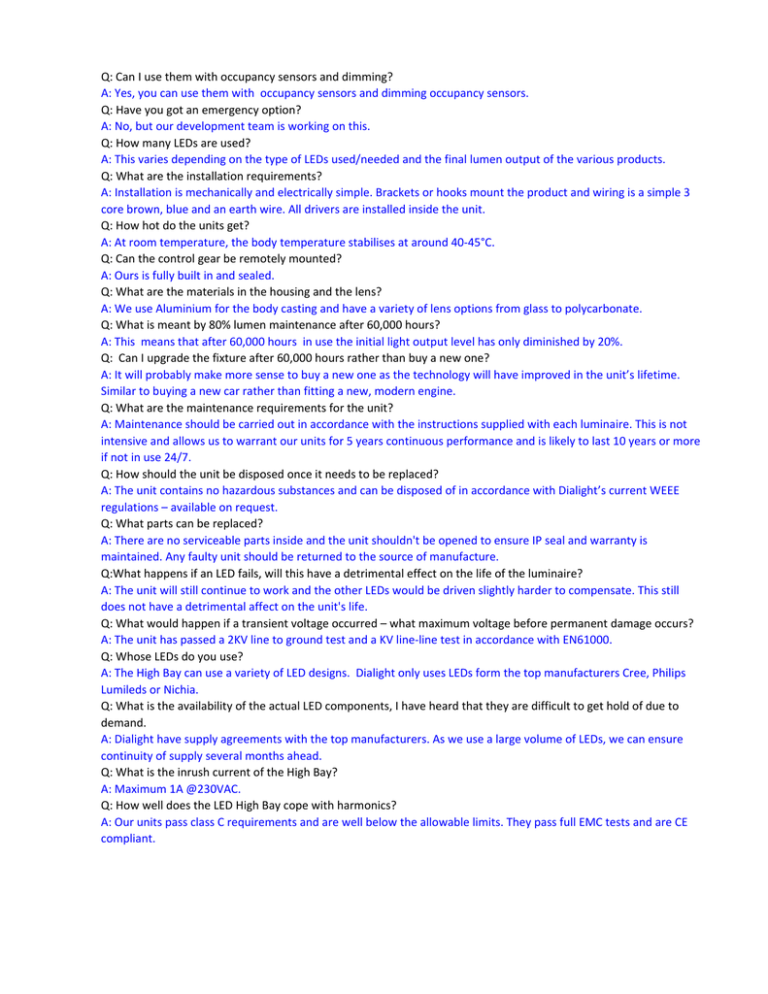
Q: Can I use them with occupancy sensors and dimming? A: Yes, you can use them with occupancy sensors and dimming occupancy sensors. Q: Have you got an emergency option? A: No, but our development team is working on this. Q: How many LEDs are used? A: This varies depending on the type of LEDs used/needed and the final lumen output of the various products. Q: What are the installation requirements? A: Installation is mechanically and electrically simple. Brackets or hooks mount the product and wiring is a simple 3 core brown, blue and an earth wire. All drivers are installed inside the unit. Q: How hot do the units get? A: At room temperature, the body temperature stabilises at around 40‐45°C. Q: Can the control gear be remotely mounted? A: Ours is fully built in and sealed. Q: What are the materials in the housing and the lens? A: We use Aluminium for the body casting and have a variety of lens options from glass to polycarbonate. Q: What is meant by 80% lumen maintenance after 60,000 hours? A: This means that after 60,000 hours in use the initial light output level has only diminished by 20%. Q: Can I upgrade the fixture after 60,000 hours rather than buy a new one? A: It will probably make more sense to buy a new one as the technology will have improved in the unit’s lifetime. Similar to buying a new car rather than fitting a new, modern engine. Q: What are the maintenance requirements for the unit? A: Maintenance should be carried out in accordance with the instructions supplied with each luminaire. This is not intensive and allows us to warrant our units for 5 years continuous performance and is likely to last 10 years or more if not in use 24/7. Q: How should the unit be disposed once it needs to be replaced? A: The unit contains no hazardous substances and can be disposed of in accordance with Dialight’s current WEEE regulations – available on request. Q: What parts can be replaced? A: There are no serviceable parts inside and the unit shouldn't be opened to ensure IP seal and warranty is maintained. Any faulty unit should be returned to the source of manufacture. Q:What happens if an LED fails, will this have a detrimental effect on the life of the luminaire? A: The unit will still continue to work and the other LEDs would be driven slightly harder to compensate. This still does not have a detrimental affect on the unit's life. Q: What would happen if a transient voltage occurred – what maximum voltage before permanent damage occurs? A: The unit has passed a 2KV line to ground test and a KV line‐line test in accordance with EN61000. Q: Whose LEDs do you use? A: The High Bay can use a variety of LED designs. Dialight only uses LEDs form the top manufacturers Cree, Philips Lumileds or Nichia. Q: What is the availability of the actual LED components, I have heard that they are difficult to get hold of due to demand. A: Dialight have supply agreements with the top manufacturers. As we use a large volume of LEDs, we can ensure continuity of supply several months ahead. Q: What is the inrush current of the High Bay? A: Maximum 1A @230VAC. Q: How well does the LED High Bay cope with harmonics? A: Our units pass class C requirements and are well below the allowable limits. They pass full EMC tests and are CE compliant.




